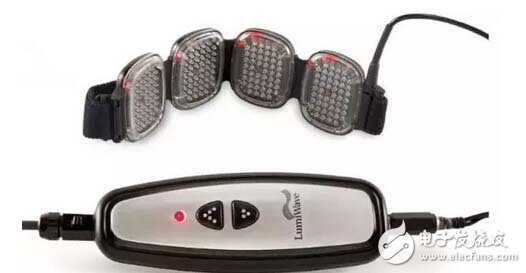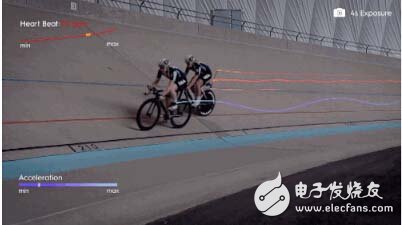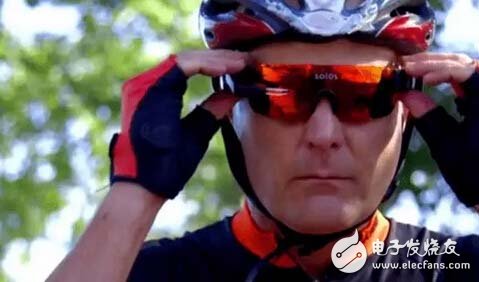The Olympic Games is a testing ground for testing high-tech. From infrared LED wearable therapeutic devices, smart phones, smart glasses, etc. to anti-Zika virus clothing, let us take a look at the details.
1, the gymnastics group of baby: infrared LED wearable therapeutic instrument
Although the infrastructure level of the Rio Olympics is not so satisfactory, as the saying goes, “It’s better to rely on people than to rely on yourself†– the American Gymnastics Team undoubtedly understands this point very well, in order to help its Olympic athletes relieve pain and relieve tension at any time. They brought the upgraded LumiWave treatment device back.

It is understood that LumiWave is an infrared wearable therapy device that can use micro-light therapy to help patients relieve pain, especially for strains, sprains and joint inflammation. After use, patients can recover quickly. As early as 2004, LumiWave began to spread within the Olympic team, but it has only been officially sold to date.
Specifically, the device is equipped with 50 infrared LED lights. When the athlete wears LumiWave on the body, the device will emit a pulse signal to promote blood circulation in the injured area of ​​the athlete, further increase the release of nitric oxide in the human body, and finally accelerate the individual cells. Recovery.
2, GE lighting LED biosensor monitoring athletes
The 2016 Summer Olympics was held in Rio de Janeiro from August 5th to 21st. GE Lighting's LED biosensors for the Olympics are used in many lighting venues to monitor athlete performance.
According to the Jakarta Post, GE serves a variety of areas of the Rio Olympics, including lighting, healthcare, energy and digital performance management.
LED lights are not only used to illuminate sports venues, they are also embedded with biosensors to visually monitor athlete performance. A report by Daily Dot shows that GE's embedded LED biometric sensors can monitor athletes' performance and turn their trajectories into light and shadow.

Embedded sensors for tracking athlete acceleration, muscle activity and heart rate
GE's global business marketing leader Steve Pepe said: "GE uses sensors to receive analog pulses and convert signals into digital information, with custom software measurements and noise processing, and then convert analog signals into a series of signals. Different red, green and blue LED lights."
The information received from the sensor is converted to light at a rate of 240 updates per second, so that the athlete's activity can be reflected very accurately. These LED lights become like digital brushes. Using slow-motion photography and time-lapse exposure photography, the light can be visualized to show the flexibility of the athlete's posture.
3, bicycle team welfare: smart glasses to improve training efficiency
This is a smart device similar to Google Glass, the only difference is that it is very popular among cycling athletes - its name is Solos smart glasses, the current American bicycle team has begun to popularize in training.

Specifically, this versatile eyeglasses are tuned for cyclists, with built-in heart rate sensors that monitor the athlete's heart rate, burn calories, and provide real-time navigation and phone functions. Similar to Google Glass, Solos's display screen is projected directly onto the lens of the glasses, quantifying the movement, and then giving personalized recommendations based on the athlete's status, helping the athlete adjust the rhythm and speed. To facilitate communication between coaches and athletes, Solos also supports stereo headphones.
4, the gospel of swimmers: BMW underwater tracking
BMW not only does the car, they also help the coach quantify the athlete's movements under the water.

It is understood that BMW, as a partner of the US Olympic Committee, has launched an intelligent system for butterfly swimmers that can monitor posture. Specifically, BMW's underwater system can be used by attaching a miniature LED light to the athlete's joints, such as wrists, shoulders, buttocks, knees, ankles, etc., using underwater light, while assisting with underwater cameras. Shoot the athlete's swimming position. Thereafter, the computer uses a visual algorithm to analyze and quantify the data. Previously, the algorithm has been used in BMW's automotive product line as a core part of its automatic cruise technology, which can be used to identify road barriers.
5. Athletics Olympic athletes are blessed: AeroBlades
This time, the uniform of the Chinese national track and field team is really "low-key luxury" - using Nike's AeroBlades technology, which was previously only used in sprint projects.

It is reported that the technology adds a "small triangle" on the sides of the legs and arms of the sportswear. When the athletes exercise, these inconspicuous small triangles can "adjust the aerodynamic environment around the people, thereby reducing the body resistance." . At the same time, the Chinese team's sportswear is said to have also adopted "black technology fabrics" - a high-strength special fiber fabric. Athletes wearing these materials can effectively improve venous return, reduce blood stasis, accelerate metabolism and achieve short-term energy recovery.
Ac Motor,220V Servo Motor,Ac Motor With Speed Controller,Remote Motor With Speed Controller
NingBo BeiLun HengFeng Electromotor Manufacture Co.,Ltd. , https://www.hengfengmotor.com